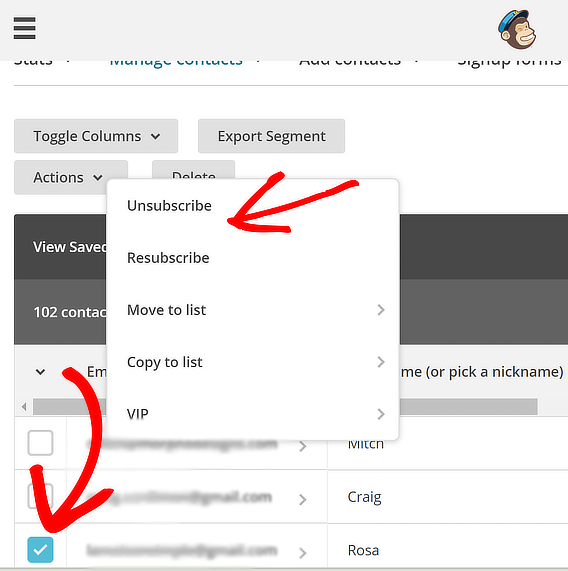

Once you’ve selected your list, identify disengaged subscribers and create a new segment for them. In most cases, it makes sense to start with your most active email list. If you have more than one email list, choose the email list that you want to clean first. Here’s how to clean your email list: Step 1: Choose your list Now that you’ve tried to salvage disengaged subscribers and removed subscribers who aren’t useful to you, it’s time to start scrubbing. For these reasons, it’s smart to remove these subscribers from your list. And at worst, they may be driving up your spam complaint rate. So at best, they’re likely not at all interested in hearing from you. Paid subscribers didn’t actively sign up for your list and probably didn’t give you permission to contact them. But what’s even worse? Keeping them on your list. It’s never a good idea to buy an email list or buy subscribers for an existing email list. To avoid paying for the same subscriber twice, remove duplicate addresses. This can leave you with duplicate email addresses on your list. And although some marketing email providers delete duplicates automatically, not all of them do. Sometimes people sign up for your email list more than once. You can usually spot spam email addresses by searching for email addresses that just don’t look right. So it’s a good idea to delete spam email addresses when you clean your email list. Sending emails to spam addresses can be a security risk (not to mention a waste of money). And for those who respond “yes,” show your love by offering them a freebie as a thank you.īefore you get deep into email list cleaning, there are a few categories of subscribers you can remove: Spam email addresses Remove those who answer “no” or don’t respond. In your re-engagement email, ask subscribers to clearly indicate whether or not they want to remain on your email list. Plus, if you make your subject line compelling and different from what your subscribers usually see from you (e.g., “Is everything OK? I’ve missed you.”), you might succeed in capturing the attention of subscribers who were ignoring your emails before. So it’s still worth it to send one before you get to work on scrubbing your list. On the other hand, it doesn’t really take that much work to send a decent re-engagement email. But remember that if people aren’t opening your emails now, what are the chances that they’re suddenly going to open your re-engagement email? This can seem like a good idea in theory, especially if you’re desperate to keep your subscriber count as close to where it is now as possible. Most experts recommend sending a re-engagement email to disengaged subscribers before removing them from your list. Fix any typos you find and see if these disengaged subscribers begin opening and interacting with your emails. Obvious typos include misspelled email provider names (e.g., “gamil” instead of “gmail”) and company names (e.g., “snlife.ca” instead of “sunlife.ca”). To salvage subscribers who fall into this category, review the email addresses on your email list for typos. In either case, your emails don’t end up reaching the person who signed up to be on your list. When this happens, the emails you send them will either bounce (if the typo email address doesn’t exist) or end up in someone else’s inbox (if the typo email address ends up being someone else’s address). In the rush to sign up for your lead magnet or content upgrade, some people make a typo in their email address when filling out your opt-in form. Download my FREE swipe file with a full welcome email series copy template.īefore you dive into scrubbing your list, there are two things you can do to salvage disengaged subscribers: Find and fix typos

Want a high-quality email list that’s full of engaged subscribers? Send a welcome email series to new subscribers when they join. Keep reading because I’m breaking it all down below. You also know that your open, click through, unsubscribe, and spam complaint rates can help you learn when to clean your list.īut now there’s something else that you’re probably wondering about: how exactly do you clean your email list? How? By making it easier to reach and engage the subscribers who really do want to hear from you. If you’ve checked out those posts, you know that cleaning your email list improves the success of your email marketing campaigns. Recently, I’ve told you why it’s important to clean your email list regularly and how to know when it’s time to give it a scrub.


 0 kommentar(er)
0 kommentar(er)
